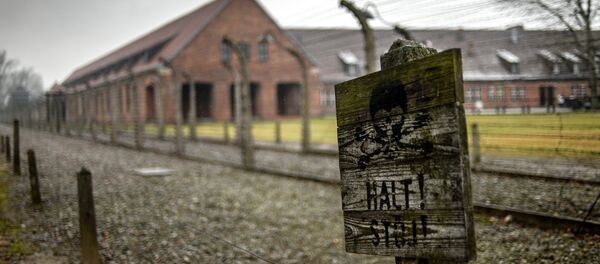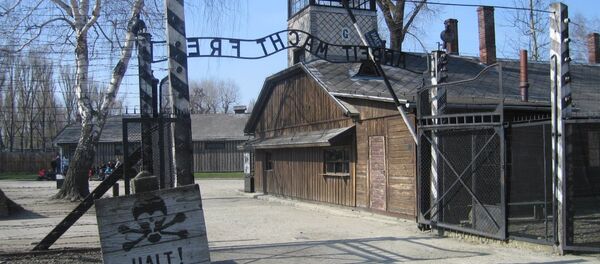In July 2016, former SS soldier, 94-year-old Reinhold Hanning, was sentenced to five years in prison. On 28 November 2016, former "accountant" of Auschwitz, 95-year-old Oskar Gröning, was also found guilty and sentenced to a five-year term.
During such hearings defendants often claimed that they didn't see what was happening in the camp and were unaware of the crimes committed there.
"Often, there are questions like whether the guards could to see the crematoriums from the tower? Or if, for example, a company of soldiers was walking across the territory of the camp, you can configure the virtual camera at a height of 1.7 m (eye level) and see what these soldiers saw. And in this way you can understand what they could actually see, and what they could not," Breker explained.
The new virtual reality death camp model will answer all these questions with regard to each of the former Auschwitz guards who are still alive and expected to face prosecution. The model gives law-enforcement services and a scary, real impression of the camp and an opportunity to "visit" the camp using virtual reality glasses.
"It is based on digital models and orthographic aerial footage," the engineer explained. "We received them from the Geodetic Survey in Warsaw. And then, in May 2013 we were in Auschwitz, made measurements of the preserved buildings using a laser 3D-scanner and searched for the plans of those buildings that had been destroyed in the archives of Auschwitz.
In an interview with Sputnik Germany, head of Germany's Central Department of Justice Jens Rommel explained how important this 3D-model could be in terms of evidence.
"From criminal perspective, the evidence includes the testimony of witnesses and experts, documents and crime scene examination. That is why the 3D-model can't be viewed as independent evidence," Rommel stated.
However, according to Rommel, in many cases it could be still very useful, for example when it show what a person could actually see or not.
"After all, the court should always carefully check what a witness or an expert say and compare this information with the other evidence. And it seems to me that within this framework it can be a reliable tool," Rommel said, adding that similar 3D-models could be used in criminology in the future.




